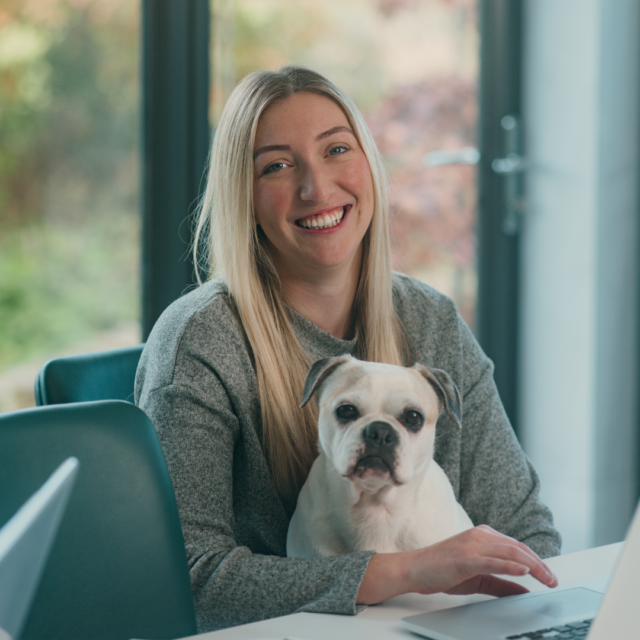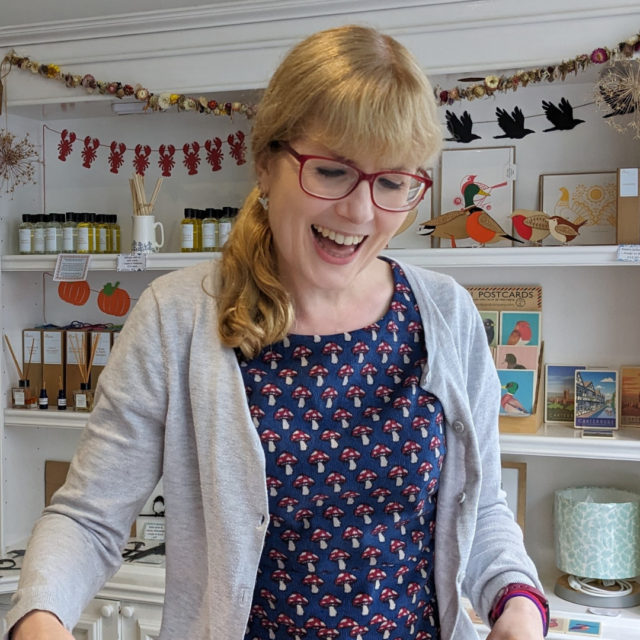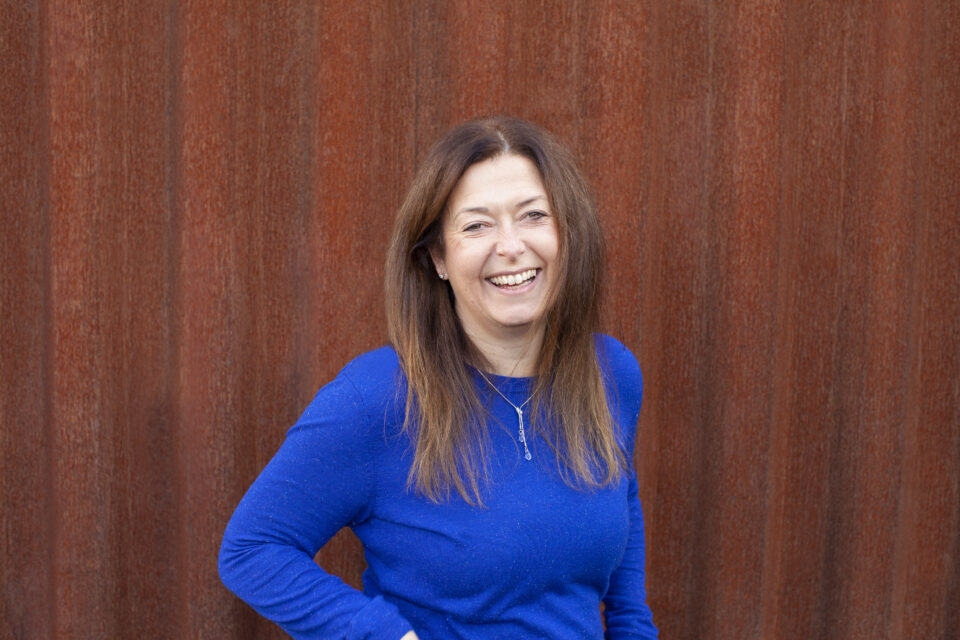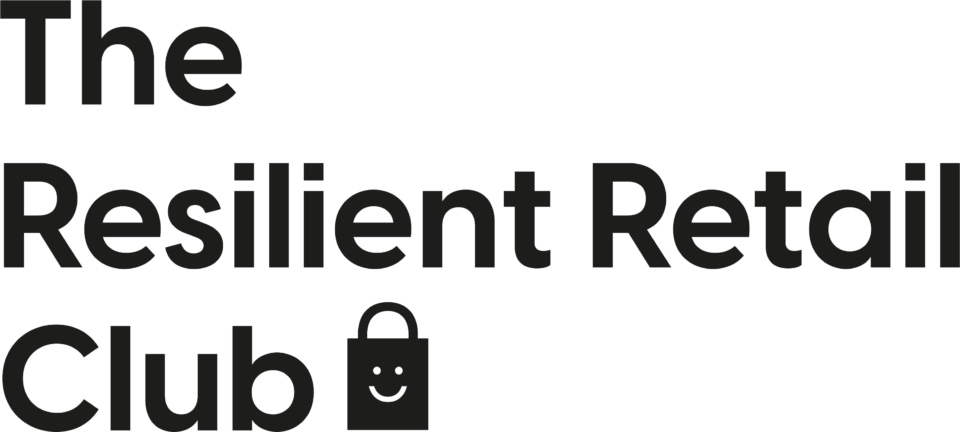Welcome to episode number 181 of the resilient retail game plan. Hi, I’m your host, Catherine Erdly, as well as the founder of the resilient retail club, which is my membership group and mastermind for product businesses.
The January cohort of the mastermind is kicking off very shortly. If you’re interested in finding out more, head over to resilientretailclub.com take a look at all the details and you can also find a link there to book in a call to talk about this in more detail. We’d love to have you.
So today I wanted to talk about building a business that doesn’t just look good but one that feels good. And it occurred to me that this phrase is actually in the intro for this podcast.
It has been since we started. And I thought why not actually take the time to explore what this concept means. It’s something that I mentioned in talks that I do, my social media, but I wanted to actually dive into this concept a little bit more because I know it’s something that often resonates people.
Welcome to the Resilient Retail Game Plan, a podcast for anyone wanting to start, grow or scale a profitable creative product business with me, Catherine Erdely. The Resilient Retail Game Plan is a podcast dedicated to one thing, breaking down the concepts and tools that I’ve gathered from 20 years in the retail industry.
and showing you how you can use them in your business. This is the real nuts and bolts of running a successful product business, broken down in an easy, accessible way. This is not a podcast about learning how to make your business look good. It’s the tools and techniques that will make you and your business feel good.
Confidently plan, launch and manage your products and feel in control of your sales numbers and cash flow to help you build a resilient retail business.
People will tell me when they listen to the podcast, they’ve seen my talks, they will sometimes say to me, I really thought about what you were saying about a business that doesn’t just look good, but feels good too. So what does that even mean? Let’s dive into this and a little bit more.
So when I think about this concept, what really comes to mind is that often when I’m working with people one to one, they have got the most incredible businesses from an external perspective.
So they may be the people you’ve seen on social media who’ve got piles of mailing bags, or maybe they’ve just. been established for a long time. They’ve had some really fabulous collaborations. They are people that are looked up to and other business owners who are looking at them will look at that business and say to me, sometimes I’ll even have people say to me, I want my business to be like XYZ and I actually have worked with XYZ business and I know that there’s a lot going on behind the scenes.
So I often think about this concept that we can have a business which looks fabulous. It looks great. You’ve got all these orders coming in. Your team is expanding. You’re moving to a larger premises. And from an external perspective, if you’re a business looking up at them, it may feel like, wow, they’ve really got this all sorted out.
I just wish I could get to this point with my business and then everything will be fine. But another one of my catchphrases is new level, new devil. And so what you may find is that these businesses that look like they’re feeling fantastic, really don’t feel fantastic at all to the business owner. And that is what this episode is really all about exploring this concept of what does make a business feel good.
So what are some of the things that we’re working on with people and how to actually get to that point where we are helping them understand how the business can really address some of these issues and create this business that feels really good.
The other thing as well to say is that if you are somebody whose business looks really good from the outside, you probably know that it’s even harder to admit because nobody wants to hear it.
If your business is looking like most people want their businesses to look, you’ve just recruited somebody else. You’ve just opened a new shop. You’ve just moved to a larger premises. You have just had to switch over your manufacturer because the existing manufacturer is not keeping up. Then people are generally much less sympathetic for example, if somebody is saying, actually, my sales are really slow and I’m struggling.
That sort of issue where people are talking about the slow sales tends to be something that people can really relate to. Whereas as you grow and get bigger, there are fewer people who really understand just how actually how stressful it can be. And. who’ve been through this process themselves and understand that the next level is not always as blue skies and rainbows as people would have you believe.
So what I want to talk about really is then this idea of building a business that feels good and even if you’re thinking to yourself when you listen to this episode Oh, well, I wish I had those problems I’m not at that stage yet. Then It’s still worth thinking about these concepts of what makes your business feel good because if you build your business from the get go on these concepts, then it can lead you to feel a lot more in control as the business grows and you can do it in a more sustainable way.
In other words, in a way that isn’t going to make you feel like you need to burn out, shut the business down, burn it all to the ground because you just can’t deal with it anymore. Or it just feels too stressful. So, here are some of the things that can really help.
Focus on your bottom line
Catherine Erdly: First one, comes no surprise to hear me say this, is profit. The reason I want to bring this up is that so many times when we talk about business growth, we talk about revenue growth, we talk about going from, as I did in my recent talk, going from six figure years to six figure months. Or we talk about, for example, what it looks like if your product goes viral and you’ve got a pile of sales coming in.
So much of the time when we’re talking about growth, we are definitely talking about this turnover growth. We are not talking about profit growth, but I would have to say one of the things that makes it super, super stressful for people as their businesses grow is that if it’s grown from a top line, but the bottom line has not been keeping up.
So people will come to me and they’ll say things like actually I made more money. I was more profitable. Two years ago when I didn’t have this team and I didn’t have this unit and I wasn’t spending as much on ads and my sales were much lower, but I overall had more money. Or they’ll say the numbers are getting bigger and the outlay is getting bigger, but I just don’t feel like it’s super consistent. I don’t feel like my cashflow is under control.
So these are really indicators to me that the top line has been outstripping the bottom line. And if you think about top line sales growth, top line sales growth looks really good, but Ultimately, if you have got more sales, that means you have got to buy more stock, means you need larger premises, it means you need more materials, packaging, it means you need to employ more people, and unless you’re keeping pace with the profit side of things, then actually all of those additional expenses can lead you to basically be creating a lot of busy work.
Or as a boss of mine used to always say being a busy fool. In other words, you’ve got lots of going on, but it’s really, is it worth it? And there have been times for sure when I’ve worked with clients and we’ve been able to look at things like, for example, if they put their prices up and even if their sales orders drop, the number of orders drop and they’re not dispatching as much, they can end up feeling much better about it if they’re making, sometimes they end up making the same or even more money with fewer sales orders. And that is actually a really good thing because that means fewer people to employ, less space needed to dispatch and all of those things.
So top line sales growth without that profitability is really something that looks great, but really doesn’t feel great.
The other thing that happens is stock. Stock is such a big piece of profitability in a product business. And as you grow, you may be buying more, but as you buy more than that means there’s naturally more redundancy built into your stock. So the more stock you have, the more likely you are to have pockets of stock that aren’t selling.
And therefore the lesser that’s addressed over time. The more likely you are to end up with a slower stock turn. Slower stock turn is related to lower profitability and therefore you have to be really careful as you grow, that you are keeping the speed of your stock turn up so that you don’t end up with lots of stock because you’ve been buying lots of stock because that seems like a really great thing to do to fuel those sales, but then you’ve got more stock as a, compared to your sales and therefore it’s turned slower and therefore there’s less cash in the bank.
Another profitability killer is when your fixed costs are out of whack with your sales, and that is one that causes a big headache. To be honest, that is usually the least likely cause of issues with profitability that I see in a product business, but it’s definitely something to look at. That can be a question of too much too soon.
For example, sales have started to grow and you’ve outlaid money onto staff or premises. And maybe it’s a little bit too early and it’s a little bit too big for the size of your sales. And that’s something that can be addressed either to see, okay, well, actually it’s fine. It will cause corrective sales, keep on growing or to adjust it.
Another one there that can be a culprit is the cost of advertising. So that is something that we look at in more detail. Because if you’re spending a lot of money on ads in order to get your sales and you’re not really seeing that return in terms of your customer lifetime value, in other words, how much money a customer spends with you, not just the first time they buy with you from an ad, but over time, then that can be a real issue with your profitability as well.
So if you are experiencing growth and it isn’t feeling great, then definitely, I would ask yourself, is the business as profitable as you would like it to be? The reason that profitability helps is there’s just much more money to do things with. So there’s more money to, for example, have very targeted discounts if you need to clear through on productive stock.
That’s easier to do if your overall profitability is better. It’s also easier to pay yourself more as a business owner if you’ve got more profit. And that’s really important. See people who are running large teams and really high turnover businesses, but they’re not paying themselves that much more than they were way back when.
And that is an issue that can be very demoralizing for you as a business owner. So higher profitability means you can pay yourself more. And I really do believe that we deserve to be rewarded financially from our businesses in a substantial way. So if you’ve grown a substantial business and you’re not giving yourself a decent salary, then that can feel really unpleasant as well.
Profitability, as I said, it helps with that rewarding yourself financially. And it also just helps you have the money to get help to do things so that if you do have a pinch point in the year, you can bring in extra help, or you can pay experts to look at certain elements, or you can take on extra people to take some of the burden off of you.
So these are all things that profitability really, really helps with. And that is why when it comes to building a business. That doesn’t just look good, but feels good for me. Profitability is really, really fundamental, important part of that.
And so what else really helps with this idea of building a business that feels good?
Having a strategy and plan to get you away from being reactive and be more proactive
Catherine Erdly: Well, having a strategy and a plan and being generally speaking, more considered is another big factor when it comes to moving somebody from feeling extremely reactive to being more proactive. So that is something that I work with people one to one on. Often when people come to me as business owners, you’ve got a decent sized business, but it’s not feeling great.
I said, one part of it is the profitability. Although sometimes actually, to be honest, their profitability is pretty good. And sometimes they’re even sitting on a decent amount of cash in the business. They’ve got their expenses covered for the next few months, but they don’t really feel like they’re in control.
They feel like they’re a bit of a hostage to fortune if you like. So they are not looking. ahead. They’re not feeling really considered about what’s coming up. They don’t have a plan to execute everything that needs to be done on time. They’re just kind of going from the day to day. And that means they’re quite often coming into situations like arriving in the fourth quarter and not really having thought through what that means and having to scramble last minute in order to bring people in.
Business is always unpredictable to a certain extent. And so we do have to be flexible as business owners and we do have to be reactive. And we do have to be able to have the ability to be agile and to adapt to circumstances. However, product businesses, once you’ve. got a handle on the type of business that you run, the type of sales that you’re going to be doing, the, the key times of year for your product business, then it does become, if not entirely predictable, it does become something that you can anticipate where the pinch points are going to be, for example.
For lots of you, that will be the fourth quarter. For some people it might be the summer, it could be back to school if you’re a stationary kidswear brand. And so what you need to do, part of that being strategic, is really anticipating those fluctuations in your sales and getting yourself in a situation where you have got a clear plan that can massively, massively reduce the stress of the founder.
Because you’ve all been there in this pinch point and it’s just too late to to sort of stuff out. You just have to kind of go with it. And there’s something about that, that is very much the life of a small business owner. It can feel quite good in a way sometimes in terms of the adrenaline you get from just hustling to get everything done.
But over time, that does actually get really exhausting. And so, especially if you’ve been running the business for a certain number of years and you feel like you are always still hustling and Still always rushing to get things done. Have a think about how much better would it feel to have more of a plan to start 2024 and to look forward and to say, right, this is the plan that I want to have for the year and therefore this is what I’m going to do as opposed to just react to things as they come up.
So that is for me definitely a big part of a business that feels good is to an extent being able to look forward and anticipate what’s happening. So you can look at things like your cash flow, you can look at things like how much stock you’re going to be buying in a certain month, what your sales forecasts are for a certain month.
You can anticipate, for example, that the month of February is always extremely quiet for you as a business owner and use that time to get on with non selling related tasks. That is a very different feeling than having this awful feeling of dread every February.
When the sales aren’t great and thinking maybe there’s something wrong with me. There’s something wrong with my business So being more strategic forward focused realistic about what to expect from your business As these can all make a huge difference to the amount of stress that you go through as a. Founder Not to mention the fact that if you can pre prepare things take tasks out of the busy season front load them Even if you have to move it three four five months earlier than you think you’re going to need it But then you’ve got this work in hand or you’ve done this prep work It makes a massive difference and i’ve worked with a number of people on their fourth quarter where we’ve anticipated what the sales might be. We’ve looked at the team structure. We’ve looked at the product selection. We’ve got the product ordering done ahead of time. We have even partly made certain elements of the product. If for example, you’re somebody who makes products in house. Or place the orders early enough with the manufacturer so that the whole run into the fourth quarter is much smoother and much more considered and much less stressful. It is possible to go from having a fourth quarter where you’re working every evening until one in the morning. To having a fourth quarter that may still be busy and still be much busier than it normally is, but it’s actually feeling much, much better.
These are all things that are possible and they definitely help with a business that feels good as opposed to a business that looks good.
The third element that I think this is really important. It’s something that I’ve been thinking about a lot recently that helps with a business that feels good is,
You control your business not the other way around
Catherine Erdly: founders who’ve got an internal focus, they are completely aware of what’s going on around them. They’re aware of things like the cost of living crisis or geopolitical events in the global scale and the impact that might have on consumer spending. They’re really. Clued into what’s going on with their customer, but they’re very much focused in on it as an opportunity or something for them to consider when it comes to working on the business or something as simple as the Instagram algorithm.
They’re aware of the fact that it’s shifted, but instead of spending all of their time feeling angry or upset about this, they are using it as an opportunity to rethink other avenues for the business. It’s really about having that growth mindset and it’s absolutely critical for being a business owner of a business that doesn’t just look good but feels good too.
If you are spending too much time with external preoccupations, so thinking about what’s going on, that business over there is doing better than me, I’m really worried that Instagram isn’t showing my posts and you’re letting it really affect you, letting yourself get too stuck in feeling demoralized or having a tough time.
Then it can really impact your business. Whereas if you’re somebody who says, okay, my customer is being cost conscious, but here’s how I’m going to try to talk to them about the value of my products or okay. Instagram’s being tricky. So let’s have a look at all the different other options for marketing.
Where am I going to focus my time and energy and the people who are internally focused, as I said, then not the ones who are spending too much time feeling like they are. Without agency, they don’t have the ability to make changes for their own business. They are the people who are aware that there are things that they can control.
The people who spend too much time with the external focus, they also tend to overlook the fact that there’s lots and lots of elements of the business that are completely within their control. So you are in control of how much you sell your products for how profitable they are. You are in control of how consistent you are with your marketing.
You’re in control of work that you do on your own website, whether or not you’re developing new sales channels. All of those things are completely within your control. Whereas if you spend too much of your time and energy, you’re effectively giving your time and energy to things that you can’t control, that you can’t make a difference in.
And that is where it can get really dangerous. So. I would say one of the key factors then in terms of making you feel like the business doesn’t just look good but feels good too is taking that responsibility for your own business and spending more of your time looking at things that you can change than spending your time looking at things that you have absolutely no impact on.
How do you know if you’re chasing something that looks good versus something that feels good?
Catherine Erdly: So how do you know if you’re chasing something that looks good versus something that feels good? This is something that I wanted to address because I feel like this is really important as well when it comes to thinking about our strategy as business owners, thinking about the start of the year when we’re considering our plans for the year, what we want to achieve.
And I do think that part of the business that that feels good as well as instead of looks good or as well as looking good is, is focus and is recognizing that as small business owners, I always say this, your most precious resources are your time and your money. So you don’t want to waste either of them.
And so when it comes to opportunities, there are a few things for you to think about, to really try and understand, is this something that I’m chasing because it looks good or because it feels good? Because there are actually many, many. Opportunities or I should use the, you know, air quotes opportunities that litter the landscape of running a small business that can actually look like they’re going to be huge big wins, but they actually can turn into massive distractions.
And that’s what’s really tricky. I think about being a business owner. You will be offered to participate in events or PR opportunities. You’ll be offered the chance to stock your products in certain shops, for example. So there are lots of different things that look like they could potentially be something that’s beneficial, but actually are somewhat of an illusion or a bit of a mirage and actually can turn into a massive distraction.
Focus on the fundamentals of your business before you get distracted
Catherine Erdly: So it’s a really tricky one because. You could just say, right, stay super focused. Make sure your internals are ready first. And I would say if you’re somebody who doesn’t really use email marketing to its full capacity, never has a chance to look at your SEO, for example, on your website. is always behind on your product development, never has a chance to develop new products, never gets a time to talk to your customer.
And these are all indicators that some of the real fundamentals, the things that you can control in your business are not being looked after. Also, I would say things like, have you checked your pricing? Have you looked at your stock? Have you come up with a stock plan? These are all things that are like eating your vegetables in your business, right?
They’re not always the most glamorous, although. You know, you can make vegetables glamorous but that’s maybe a conversation for another time, but they really feel good in the long run. There’s things that really benefit you. And then these other opportunities come along and they’re a little bit like donuts, you know, like they look amazing.
And you think this could be really fantastic. Maybe you haven’t had donuts before and they made you feel a bit queasy, but you’re like this time it’s going to be great. And maybe it is great when you first start it, but then by the end of it, you’re beginning to feel the regret. So are they, are Are you eating your vegetables?
Are you chasing the doughnuts? And so, how do you tell the difference? I mean, I do think, generally speaking, if it’s something that you can control, that is usually something that is going to help you make your business feel better. So, again, like the real nuts and bolts, fundamental underpinnings of your business, things like your, your ability to communicate with your customers, your own website work, all of this stuff.
This should be really be the priority. And then if you’ve got the time and capacity to do other things, then that’s great. But really what you should be asking yourself is, you know, Is it aligned with your values? Is this, is this something that you want to do in your business? Is, or is this something that somebody else has suggested to you and you’re not sure if it’s going to be good or not?
Is it actually going to add sales? Now this is a tricky one to answer because of course yes from time to time there are going to be these opportunities to submit products to somebody. Or to do something where you’re being featured somewhere and it will have a big impact on your sales. However, you have to kind of weigh up the probability of that versus, is it going to turn into a massive distraction?
The same goes for if you’re going to an event, the same also goes if you are, for example, trying to get your product stocked in a particular store. Have a look at the numbers. Make sure you run through everything. Make sure you run through the cost of what it’s going to cost you to fulfill those sales.
Or if you’re going to an event, what’s it going to cost you in terms of Everything in terms of your parking, your accommodation, the food you have to eat on the day. If you can’t bring it with you, all of those sorts of things, have a look at those and then work out. Is that actually going to add money or am I better off spending that time and not getting distracted on some of those real underpinnings of the business?
So ask yourself, is it a donut or is, are you eating your vegetables and just really be aware of distraction because It can be really difficult as a business owner. You don’t have a huge amount of time and head space. And if you’re being distracted and pulled in different directions by some of these things, which look like they could be beneficial.
But the question is, is everything else in place? Are all the fundamental underpinnings of what makes a business not just look good, but feel good, are they in place? And then you can move forward.
My recipe for a business that doesn’t just look good, but also feels good.
Catherine Erdly: So there you have it. My recipe for a business that doesn’t just look good, but also feels good. It’s a focus on profit. It’s a focus on strategy, being strategic, having a plan. It’s a focus internally rather than getting distracted by the external. And it is prioritizing those, maybe not so exciting, but super crucial tasks to make sure all of the underpinnings in place over things that may look good, but may actually just be a distraction.
And if you manage to do that, Then you will lay the groundwork for something that feels really solid and dependable. And as you grow, it will not run away with you because you have got a clear plan in place and you are working through it. Not to say you won’t get stressed. Believe me, everybody gets stressed even when their business is super strategic and they’ve done loads of planning.
And of course we need those. We do need a spark. We do need that creative spark. We do need to try new things. So it’s not all about trying to make everything super predictable. But can you introduce an element of that? Can you make it feel a little bit more proactive and less like you’re winging it and the whole business is in your head and that can be a really uncomfortable place to be as well.
Thanks so much for listening. I’d love for you to come over to Instagram at Resilient Retail Club. Say hi, let me know what you thought about today’s episode. Let me know if you feel like you’re eating your vegetables or chasing the donuts.
Have a look at Resilientretailclub. com. Find out more about the mastermind or the membership. See if either of those would be a good fit for you this year as you work towards your business goals.
If you have a moment to rate or review the podcast, then that would be much appreciated. It helps me get the word out to more people.
And of course, if you subscribe or follow, you’ll be the first to know about each new episode.







